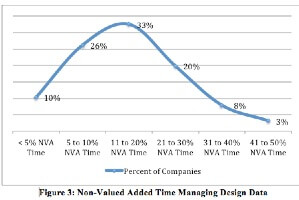 The Design Data Management Maturity Improves Profitability, Analyzing Best Practices for Managing Designs report shares fresh survey data and interviews. It updates our design data management research to cover new trends like using cloud file sharing applications to manage data. It also drills down on the topics of complexity and non-value added time spent managing design data, and shares metrics on the business improvements available from design data management best practices and technologies.
The Design Data Management Maturity Improves Profitability, Analyzing Best Practices for Managing Designs report shares fresh survey data and interviews. It updates our design data management research to cover new trends like using cloud file sharing applications to manage data. It also drills down on the topics of complexity and non-value added time spent managing design data, and shares metrics on the business improvements available from design data management best practices and technologies.
Please enjoy the summary below, or click the report or title to download the full PDF (free of charge, no registration required thanks to our sponsor, Siemens PLM).
Executive Overview
Our previous report, Best Practices in Managing Design Data, showed that “Companies with world-class performance are more likely to have very effective data management capabilities.” Now, we’ve extended that earlier research with new survey data to take a fresh look at data management challenges and best practices. We also take a deeper dive into product complexity, explore whether companies still suffer from non-value-added time managing data, and quantify the impact of improving design data management.
Survey results indicate that data management is still a big business challenge. Complexity has continued to grow, resulting in poor productivity even for smaller companies. Almost one-third of companies surveyed report their technical resources spend more than 25% of their time on non-value-added data management tasks!
The survey also uncovers that data management is evolving, including significant growth in the use of cloud-based file sharing tools. It appears that the adoption of these tools may be making it easier for companies to share their designs, but making it more difficult to effectively control design data.
The prior report makes suggestions on how to improve data management and resulting productivity, which still hold true. It shows that some companies are more effective at data management and are “more likely to use structured, collaborative design data management technology, 30% more likely to use PDM or PLM.” It also finds that these companies spend 25% less time on nonproductive data management tasks. This survey furthers the research and finds that companies with the highest product development performance, the Top Performers, have higher data management maturity. They:
- Use more collaborative design data management capabilities
- Leverage their design data management solutions for more functions
- Have tighter integration between their design tools / CAD and data management
- Couple data management tightly with cloud file sharing (if they’re using cloud)
We found these companies achieved significant business advantages, including tangibly higher revenue growth, profit margin expansion, and innovation. Further, we found they not only achieve a one-time improvement, but use data management as a foundation to grow on, toward greater PDM / PLM value.
Table of Contents
- Executive Overview
- Effective Data Management Improves Productivity, Performance
- Design Data Management Continues to be a Struggle
- Data Management Challenges Continue to Impact Productivity
- Complexity on the Rise
- Identifying Data Management Practices of the Top Performers
- Top Performers have Greater Data Management Usage Maturity
- Top Performers have Greater Collaboration Maturity
- Emergence of Cloud Highlights another Dimension of Maturity
- Quantifying Design Data Management Impact on Profitability
- Design Data Management is a Foundation to Grow On
- Conclusion
- Recommendations
- About the Author
- About the Research
- References and Links
Conclusion
Product and product development complexity are on the rise, bringing with it significant reductions in design productivity for companies small and large. The leaders are combatting this complexity with design data management. Top Performers have been shown to use more structured, collaborative solutions including PDM and PLM. This research shows that even if these tools are not within reach, companies can improve their design data management maturity and achieve a productivity and business performance advantage.
Companies can extend their design data management in several ways. The first is to follow more formal data management processes. The second is to use their CAD tool to help manage designs if they are using less formal design data management capabilities like network drivers or cloud file-sharing. “The combination of cloud file sharing with some sort of data control is a great solution for smaller companies,” concludes Bird Technologies’ Winter. “As soon as our vendor made this available it was a no-brainer and we jumped on it right away.”
Finally, companies can improve performance by increasing their design usage maturity, leveraging their design data management solution to support more tasks. There is always room to improve. The Top Performers are extending their design data management maturity in multiple ways, and are more able to leverage their design data management foundation to gain higher benefits over time.
Recommendations
Based on industry experience and research for this report, Tech-Clarity offers the following recommendations:
- Understand the complexity is a larger driver of design data management issues than company size
- Recognize the impact of increasing product complexity and improve design data management maturity to mitigate the risk
- Use formal data management tools such as PDM or PLM, if accessible
- If formal systems aren’t available and you’re using network or cloud file management, at a minimum improve maturity through better processes
- For greater levels of performance, leverage your CAD tool’s capabilities to help manage complexity
- Extend the usage maturity of design data management to continually improve and raise the bar on productivity and business performance relative to the competition

